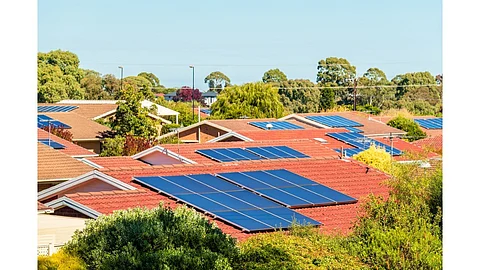

DCCEEW has opened a consultation seeking stakeholder input on adding Aggregated Resources to future CIS tenders
Their inclusion will enable accelerated transition to 82% of the renewables target achievement by 2030
It has also made changes to the existing CIS tender process as it aims for faster project delivery
Australia’s Department of Climate Change, Energy, the Environment and Water (DCCEEW) is seeking public input on potentially including Aggregated Resources (ARs) in the Capacity Investment Scheme (CIS). It believes that these small-scale clean energy assets could accelerate the transition to 82% renewables by 2030.
It defines ARs as smaller energy projects and technologies that can be combined and work together as a single participant in the energy market. These may include small-scale solar and wind farms, less than 5 MW distribution-connected batteries and community batteries.
Rooftop solar, residential batteries, and smart devices participating in virtual power plants (VPP) are also counted as ARs.
“The purpose of this paper is to consult with stakeholders on the potential inclusion of ARs, including scheduled resources with capacities below 30 MW, in CIS NEM tenders scheduled to open in late 2025,” stated the DCCEEW.
CIS is the Australian government’s flagship scheme to accelerate renewable energy deployment in the country by 2030. Its scope was expanded from the original 6 GW dispatchable capacity to 9 GW of clean dispatchable capacity and 23 GW of variable capacity through competitive auctions (see Australia Announces Plans To Auction 32 GW RE Capacity).
Through this consultation, the DCCEEW is seeking stakeholder opinion on the design, eligibility criteria, and merit criteria for the possible inclusion of the ARs in the CIS framework. It also seeks to understand how these can contribute to the National Electricity Market (NEM).
Launched on July 8, 2025, the call will be open for submissions till August 5, 2025.
In a related development, the government has updated its CIS tender schedule. It plans to launch generation tenders in August 2025 and September 2025, and dispatchable tenders in August 2025 and November 2025.
For all these upcoming tenders, it has done away with the previous framework of 2-stage bids. Instead, it will now seek to award the projects under a single stage, inviting both project and financial bids. This will reduce the tender duration from approximately 9 to 6 months and speed up project completion.
Further details of the changes to the future CIS tender process are available on DCCEEW’s website.
